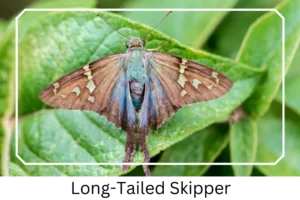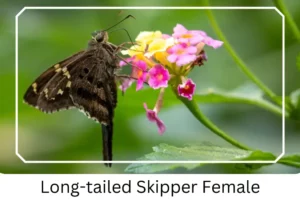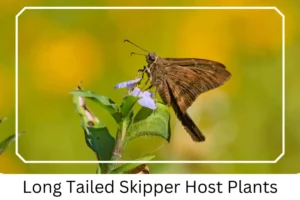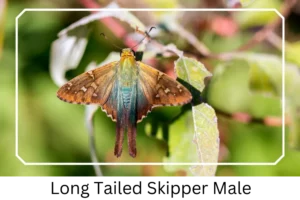Long-tailed Skipper (Urbanus proteus)
The Long-tailed Skipper, belonging to the genus Urbanus proteus, represents a fascinating and distinctive species within the Lepidoptera order. Inhabiting various regions across the Americas, these small yet remarkably agile butterflies capture the interest of both scientists and enthusiasts alike. Bridging the gap between butterflies and moths, their unique characteristics and behaviors offer a rich subject for study and admiration.
Scientific Classification
- Family: Hesperiidae
- Genus: Urbanus
- Scientific Name: Urbanus proteus
Overview
Thriving in a wide range of environments, from tropical to subtropical zones, the Long-tailed Skipper exhibits a remarkable adaptability that supports its widespread distribution. This species is especially noted for its vibrant appearance and dynamic life cycle, which includes distinct stages from egg to adulthood, each offering unique insights into its survival and ecological role.
Description and Identification
Caterpillar
The journey of the Long-tailed Skipper begins in its larval form, featuring a yellowish-green body adorned with vertical yellow lines and hints of orange-yellow. Its large, black head is a notable characteristic, preparing it for its next stage of development.
Pupa
After approximately two to three weeks, the caterpillar transitions into a pupa. This chrysalis stage, lasting around 10 days, showcases a tan to reddish-brown body camouflaged with dusty white patterns, mimicking the fallen leaves of its host plant.
Adult Butterfly
Sexual Dimorphism: This species displays distinct differences between males and females, with males featuring a unique costal fold absent in females.
Color and Appearance: In their adult form, the butterflies are primarily brownish-black with iridescent bluish-green at the base of their wings. The long tails are prominent when the wings are open, showcasing their beauty and aerodynamic design.
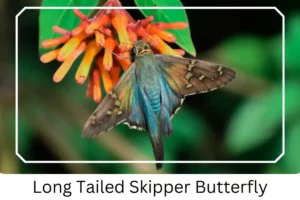
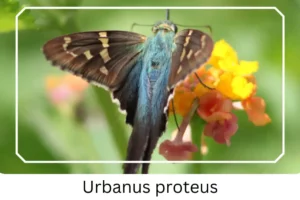 Average Wingspan: The wingspan of the Long-tailed Skipper ranges between 4.5 and 6 cm (1.7 in – 2.3), supporting their fast and erratic flight pattern.
Average Wingspan: The wingspan of the Long-tailed Skipper ranges between 4.5 and 6 cm (1.7 in – 2.3), supporting their fast and erratic flight pattern.
Flight Pattern: Characterized by their rapid and unpredictable movements, they navigate through their environment with impressive agility.
Eggs
The reproductive process begins with the laying of white or yellow eggs, placed singly or in small clusters, heralding the next generation.
Quick Facts | |
| Distribution | From tropical to subtropical South America, extending to southern Argentina and parts of the southern US. |
| Habitat | Prefers brushy fields, meadows, wood edges, gardens, and disturbed open spaces. |
| Lifespan of Adults | Can live up to two weeks in their final form. |
| Host Plants | Favors vine legumes, including beans, hog peanuts, beggar’s ticks, blue peas, and wisteria. |
| Adult Diet | Feeds on nectar from flowers like shepherd’s needle, lantana, and bougainvillea. |
How to Identify Long-tailed Skipper?
Identifying a Long-tailed Skipper can be an engaging experience, especially when noting its distinctive features. Look for the elongated tails on each hindwing and the unique coloration patterns when the wings are spread. The males’ costal fold and the dark band across the hindwings are key identifiers. Their erratic flight pattern, combined with their habitat preferences such as brushy fields and gardens, also aids in recognition. Observing these butterflies around host plants like vine legumes or nectar sources can further confirm their identification, providing a rewarding challenge for butterfly watchers.
Did You Know?
- The Long-tailed Skipper has a subspecies, U. p. domingo, in the Bahamas and the West Indies, distinguishable by subtle differences in white markings.
- In the southern United States, its larvae are known as the ‘bean leafroller,’ posing a threat to bean crops.
- Natural predators include wasps, fly parasitoids, and the Florida predatory stink bug, showcasing the butterfly’s role in the ecosystem.
- An autumnal outbreak of a nuclear polyhedrosis virus (NPV) can decimate up to 50% of the caterpillar population, reflecting the delicate balance of nature.
Conclusion
The Long-tailed Skipper embodies the beauty and complexity of the natural world. Through each stage of its lifecycle, from the visually distinct caterpillar to the dazzling adult butterfly, it offers a glimpse into the intricate interconnections of ecosystems. For those interested in the wonders of nature, the Long-tailed Skipper not only fascinates with its appearance and behaviors but also educates on the importance of biodiversity and ecological balance.

